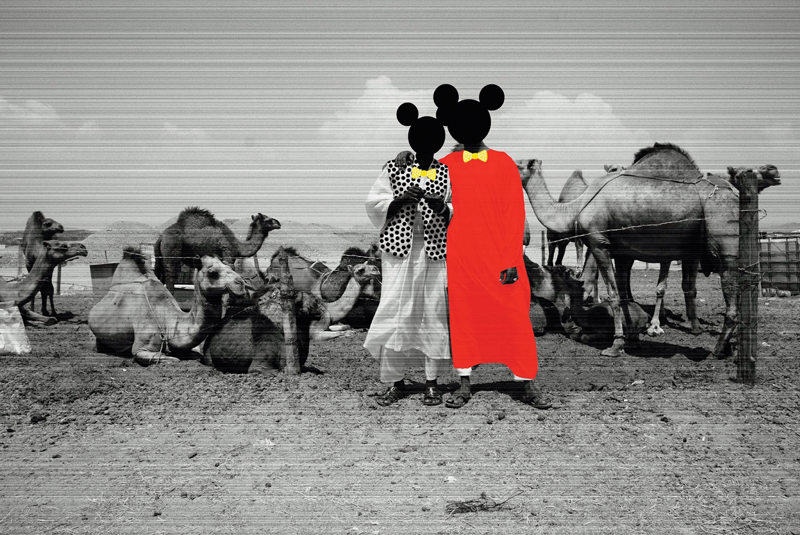Since the birth of Pop, it has transcended beyond its initial goals as a movement and trickled deeper into human behavior around the world. By defining Pop through a cultural lens, +Aziz articulates how the trend has spread across creative communities in the Middle East and the average Internet user. This enables us to observe predictions to better understand the future impact of pop.
Pop's initial mission was to help the art world catch up with consumer culture. In its earliest form, the Pop work of Andy Warhol or Roy Lichtenstein celebrated the industrialization process of making art, and has since evolved to be a concept that spans various practices and visual languages including work in graphic design, the arts, and media.
For decades, pop has created a conceptual space connecting consumerism and creativity in a multi-faceted manner. It encompasses practices that can either celebrate and/or criticize consumer culture; it can take place anywhere from street art or in graphic design and as an ethos that exists outside the worlds of art and design. After all is said and done, we all exist in relation to consumer-culture. In applying a ‘cultural lens' we come to realize it touches everything.
What is important to keep in mind is not a specific aesthetic style or color palette, but a character that coincides with mass media and youth culture. This is particularly important when it comes to looking at the Middle East's world of art and design.

POP MANIFESTATIONS IN THE WORLD OF DESIGN & ART
Lebanese designer Rana Salam is a great starting point when it comes to thinking about one of the ways Pop entered the Middle East's visual vocabulary. As one of the region's most celebrated and extroverted designers, Salam draws much inspiration from street and media culture. Her work is laced with cultural references to iconic Lebanese and Egyptian culture and charged with nostalgic overtones. Her work also incorporates references Khaleejis can identify with like candy brands (e.g. Chiclets) and Japanese cartoons (e.g. Captain Majid). What is particularly ‘pop' about her work is not simply the bold, vibrant consumable color palettes she uses, but the fact that her prints are expanded to be mobile device accessories, interior design elements, and domestic products. She embraces the commercialization of her work and, like many designers, she also produces artifacts that feed directly into consumer culture.
A more comprehensive view of Khaleej pop is provided by certain works of artists within the Edge of Arabia collective. For example, the way Huda Beydoun decontextualizes the Mickey Mouse icon in her interdisciplinary work, Documenting the Undocumented Series (2013). Or the way Ibrahim Abumsmar repurposes cardboard materials (logos included) in Birdhouse (2012). Other pieces point to specific cultural rituals, for example, in Fatima Al-Qadiri and Khalid Gharaballi's Mendeel Um A7mad (2012), which is apiece that points to the facilitative role of tissue and Kleenex in the cultural ritual of Chai Dhaha.
Another relevant work is Sama Al-Shaibi's VS. The Brother (2011), which juxtaposes our passion for the automobile, which oftentimes leads to destructive rituals, and the elegance of an airborne dancer: "Facing high levels of unemployment, many young Arab men are stripped of dignity, sexuality, motivation and hope. Often finding their masculine outlets in risky and destructive ways. One of the most popular pastimes of young Arab men – from the streets of Jeddah in Saudi Arabia to Ramallah in Palestine, where the video was shot – is the practice of daredevil car stunts, or ‘donut' spins. In contrast to this, the screen below depicts the graceful flowing movements of an airborne dancer. Suspended by a thick black silken rope, she spins closer and then further, at times enveloped by the cascading veil-like fabric and at others breaking free from its clutches."
These works collectively draw on consumer and street culture in the process of creative production. This reinforces the initial idea suggested that pop is an umbrella concept spanning various practices and visual languages that enables creative work to catch up with the way everyday life is being lived.
Words: + Aziz







